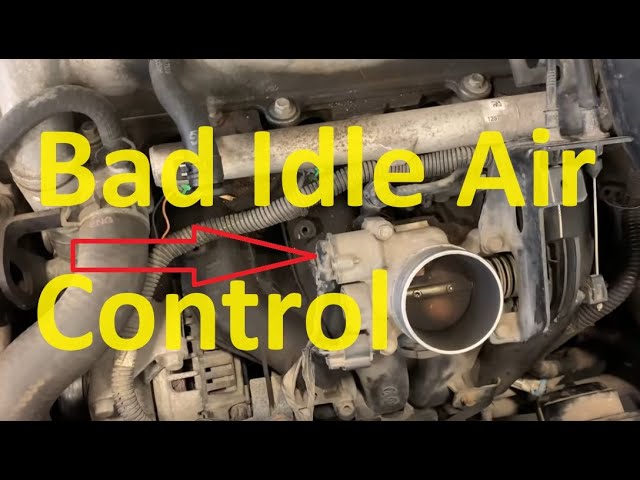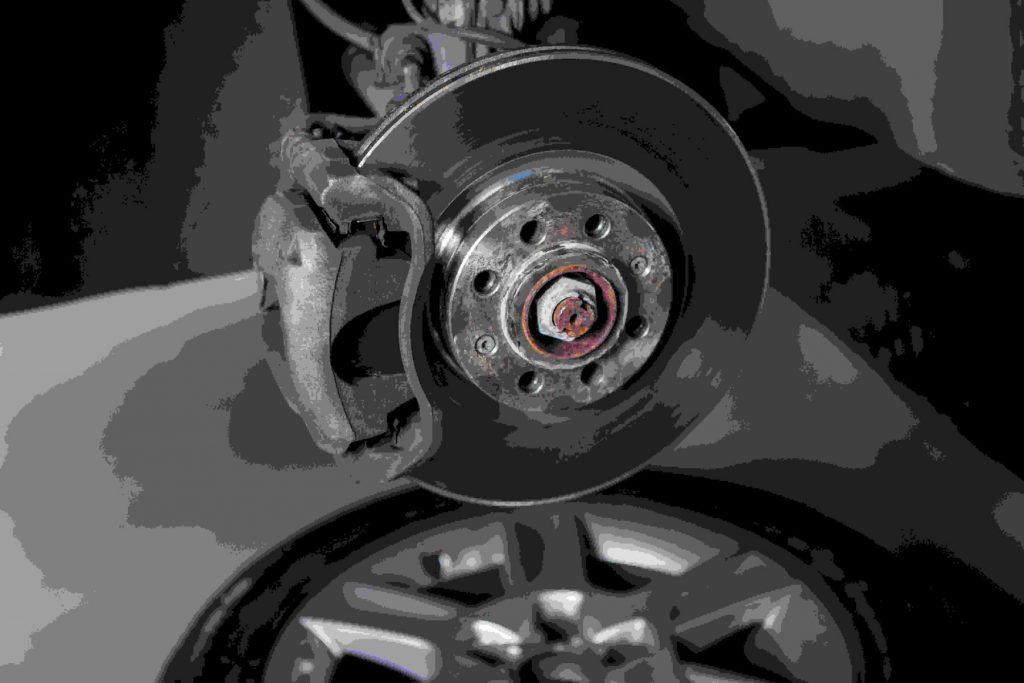In Sharjah’s busy traffic and hot climate, a smooth-running engine idle is vital. When your car starts sputtering or stalling at stoplights, a faulty Idle Air Control (IAC) valve is often the culprit. In this article, we explain what the IAC valve does, how to recognize the symptoms of a bad IAC valve, and what we can do to fix these issues.
What Is the Idle Air Control Valve (IAC)?
The Idle Air Control valve (IAC) is a small but important component that regulates your engine’s idle speed. When your foot is off the accelerator, the throttle plate closes, and the IAC valve bypasses a controlled amount of air into the engine to keep it idling steadily. In other words, the IAC valve controls the air entering the engine while idling to maintain a consistent RPM. It’s managed by the car’s engine control unit (ECU), which adjusts the valve based on engine conditions like temperature or electrical load (for example, when the AC is on).
Most cars on Sharjah roads – especially older models or those without electronic throttle systems – rely on an IAC valve to prevent stalling during idle. The IAC is typically mounted on the throttle body and can be a stepper motor or solenoid that moves a plunger to open or close an air passage. A well-functioning IAC valve ensures that whether you’re waiting at a traffic light on Sheikh Zayed Road or coasting with the engine idling, the engine gets just the right amount of air to run smoothly. This is particularly important in Sharjah’s stop-and-go traffic and high temperatures, where idling at long signals or jams is common. A stable idle helps the engine handle additional loads (like your air conditioning) without shaking or stalling.
However, when the IAC valve has issues, it can no longer properly control the idle airflow. Dirt, carbon deposits, or mechanical/electrical failures can prevent it from adjusting the idle correctly. The result is an engine that doesn’t idle as it should. In the next sections, we’ll go through the common symptoms of a bad IAC valve that everyday drivers should watch out for.
Common Symptoms of a Bad IAC Valve
How do you know if your idle air control valve is failing? Fortunately, the signs are usually noticeable in your car’s behavior. Here are the key symptoms of a bad IAC valve and what they look (and feel) like in daily driving:
- Unstable or Fluctuating Idle Speed: One of the first signs of IAC trouble is an erratic idle. Your engine idle might surge up and down on its own or hover at abnormally high or low RPM. You may see the tachometer needle dancing even though you’re not touching the gas. A faulty IAC often causes idle speed that’s too high, too low, or continuously oscillating. For example, the engine may rev to 1500+ RPM in park (IAC stuck open), or nearly choke at 500 RPM (IAC stuck closed). An idle that “hunts” – revving up then dropping repeatedly – is a classic sign the IAC is struggling to maintain steady airflow. Aside from being annoying, this can make your car feel like it might lunge forward or stall when you’re stopped.
- Engine Stall at Idle (Car Dies at Stoplights): If the IAC valve fails completely or is clogged, it might not allow enough air for the engine to idle. In that case, your engine can stall out as soon as you lift off the throttle. You might notice the car suddenly dies when coming to a stop or when idling with accessories on (like AC or headlights). An IAC stuck closed will starve the engine of air at idle, causing it to stall. Stalling is especially common at red lights or in heavy traffic – a dangerous situation in Sharjah’s busy intersections. If your car frequently shudders and quits when you’re idling or when you put it in gear, a bad idle air control valve is a likely cause. This can also happen when additional load is placed on the engine at idle (for instance, turning on the AC or steering sharply at a standstill) – normally the IAC should adjust and bump up the idle, but a faulty one won’t, leading to a stall.
- Rough Idling and Engine Shaking: Not all IAC issues cause a complete stall; sometimes you’ll experience a rough, shaky idle. The car’s engine may feel like it’s misfiring or chugging when sitting at idle. This often goes hand-in-hand with an unstable idle speed. Essentially, if the IAC isn’t providing a smooth airflow, the engine’s RPM can dip too low intermittently, making the idle rough. You might feel vibrations in the cabin as the engine struggles to stay running. While rough idling can have other causes (spark plug or fuel issues), it is commonly seen with IAC valve problems. Your engine is telling you it’s not getting the steady air-fuel mix it needs when idling.
- Hard Starting (Especially Cold Starts): A failing IAC valve can make your car difficult to start. This is most noticeable during cold starts or first thing in the morning. The IAC is supposed to supply extra air when the engine is cold (to help it start and warm up). If it isn’t working properly, you might need to press the accelerator pedal slightly to keep the car running right after ignition, or the engine may struggle and stall immediately after starting. Hard starts are a common symptom of a bad IAC valve – the engine cranks, catches, but then sputters or dies unless you give it gas. In short, if you find yourself fighting to get the car to idle after turning the key, the idle control system could be to blame.
- Illuminated Check Engine Light: In many cases, a malfunctioning IAC will trigger your check engine light. Your car’s computer continuously monitors the IAC’s performance. If it detects that the idle control system isn’t responding or the idle speed is out of expected range, it will log a fault. The check engine light might appear along with an “idle control system” error code (such as P0505). If your check engine light comes on around the same time you notice idle issues, it’s a strong clue the IAC or related sensors are acting up. Always get the diagnostic codes read – it can confirm if the IAC valve is the issue. Keep in mind that the check engine light alone doesn’t pinpoint the IAC every time (other issues can illuminate it), but paired with rough idle or stalling, it strongly suggests an IAC valve problem.
These symptoms not only make driving unpleasant but can also be unsafe. An engine that stalls unexpectedly can leave you without power steering or brakes momentarily, creating a hazardous situation. It’s important to address idle problems early. Running a vehicle with a bad IAC valve is not recommended – continuing to drive with one can lead to unpredictable stalling and even poor fuel economy as the engine struggles to maintain the proper air-fuel mix. In the next section, we’ll discuss how we diagnose and fix IAC valve issues, and steps you can take to prevent these problems.
Quick Reference: IAC Valve Symptoms and Solutions
To summarize the above symptoms, here’s a comparison of what might be happening with the IAC valve and how to resolve it:
| Symptom | What It Means (IAC Valve Issue) | What To Do |
|---|---|---|
| Idle speed too high (engine racing at idle) | IAC valve stuck open or leaking, allowing too much air at idle (engine revs above normal). | Have the IAC valve inspected and cleaned. If the valve is stuck or failing, it may need replacement. (Also ensure no vacuum leaks, which can mimic a stuck-open IAC.) |
| Idle speed too low (engine nearly stalling) or frequent stalls at idle | IAC valve stuck closed, clogged, or unresponsive – not enough air is getting through at idle, causing engine to starve and stall. | First try cleaning the IAC valve and throttle body (to remove carbon buildup). If the problem persists, the IAC may need to be replaced so it can supply proper idle air. |
| Idle fluctuates or surges (RPM erratic) | IAC valve is “hunting” or malfunctioning – it cannot maintain a steady opening, possibly due to dirt or a faulty control motor. | Clean the IAC valve and ensure it isn’t sticking. A professional can also check if the IAC’s motor or stepper is failing. Replace the valve if cleaning doesn’t stabilize the idle. |
| Hard to start the engine (especially when cold) | IAC is not providing extra air during startup, leading to a rich or starved mixture on ignition. The engine struggles to idle on its own. | Get the IAC valve checked for proper operation. The valve or its passages might need cleaning. In some cases, replacing the IAC will restore easy starts. |
| Check Engine Light is on (with idle issues) | The engine’s computer has detected an idle control fault (e.g., IAC circuit failure or idle speed out of range). | Use a diagnostic scanner to read the trouble code. If it points to the IAC or idle control system, have a mechanic test the IAC valve and related wiring. Fix may involve cleaning the valve, repairing wiring, or replacing the IAC unit. |
Fixing and Preventing IAC Valve Issues
If you’ve noticed any of the symptoms above, it’s time to take action. Ignoring a bad IAC valve will not only make driving in Sharjah traffic frustrating but can also lead to worse performance and fuel inefficiency over time. Here’s how we address IAC valve problems and some tips to prevent them:
1. Professional Diagnosis: The first step is confirming that the IAC valve is indeed the source of the problem. Our technicians will connect a scan tool to check for stored codes (such as the common P0505 for IAC issues). We’ll also inspect the valve and surrounding areas. Sometimes, problems that mimic IAC symptoms can include vacuum leaks or a dirty throttle body. By performing a proper diagnostic, we make sure that the idle issue is actually due to the IAC valve and not another component. This saves you time and money by targeting the correct fix.
2. Cleaning the IAC Valve: In many cases, the IAC valve is not completely “broken” but just dirty. Over time, carbon deposits from the engine and general grime can accumulate and cause the IAC plunger to stick or passages to clog. If we determine the valve is dirty, a thorough cleaning can often restore proper function. Cleaning involves removing the IAC unit from the throttle body and using specialized cleaners to dissolve carbon buildup. We also clean the throttle body bore and any air passages leading to the IAC. By removing the gunk, the IAC can move freely again and regulate airflow correctly. Given Sharjah’s dusty environment, this kind of service might be needed more frequently, as dust and sand can contribute to buildup. Regular maintenance check-ups can catch a dirty IAC before it causes noticeable problems.
3. Replacing the IAC Valve: If the IAC valve has an electrical failure (e.g., a burned-out motor or faulty sensor) or is too clogged/worn to function, cleaning might not be enough. In that case, we recommend a replacement. The IAC valve is usually a relatively affordable part, and installing a new one can instantly solve idle issues that were due to a faulty valve. Sometimes a thorough cleaning does the trick, but in other cases replacement is necessary. When we replace an IAC valve, we also reset the vehicle’s ECU idle settings if needed and test that the new valve responds correctly. You’ll immediately notice the engine idling smoother and no more unexpected stalls once the issue is resolved.
4. Preventive Tips: To avoid IAC problems, it helps to keep your engine’s intake system clean. We advise periodic cleaning of the throttle body and IAC passages during routine maintenance (especially if you’ve experienced rough idle before). Also, ensure your air filter is replaced on schedule – a clean air filter prevents dust from contaminating the IAC and throttle. For drivers frequently navigating dusty roads or construction areas in Sharjah, consider more frequent check-ups, as dirt can accumulate faster in those conditions. Additionally, if you ever notice minor idle fluctuation, don’t wait for it to get worse – early intervention can prevent a stall or breakdown.
Most importantly, don’t continue driving long-term with serious idle issues. Apart from the inconvenience, a car that stalls in traffic can be a safety hazard. It can also lead to other complications (for instance, repeated stalling might foul your spark plugs or strain your battery and starter with hard starts). We strongly recommend addressing IAC valve problems promptly once symptoms arise.
Smooth Idle in Sharjah: We’re Here to Help
When your car’s idle becomes a problem – whether it’s stalling at every stop or shaking like a blender – it’s not something to ignore. The good news is that Idle Air Control valve issues are diagnosable and fixable with the right approach. Often, it’s as simple as clearing out some built-up carbon or swapping in a new valve. In the heat and traffic of Sharjah, solving these idle issues will not only make your drive more comfortable but also safer by preventing unexpected engine stalls.
At Burj Malabar Auto Maintenance, we’re here to help get your engine idling smoothly again. Our German-trained technicians have plenty of experience resolving IAC valve issues and tuning engines to run perfectly at idle. We will thoroughly inspect your vehicle, explain the problem in plain language, and fix it using genuine OEM parts. Don’t let a bad IAC valve turn your daily commute into a stop-and-go nightmare. Give us a call or visit our Sharjah workshop, and we will ensure your car’s idle is steady and reliable – keeping you confident at every traffic light and slow crawl on the road.



